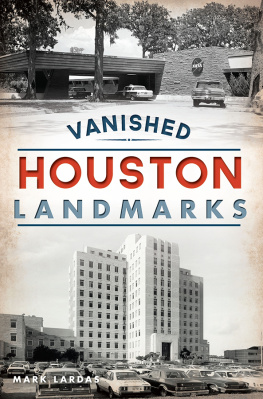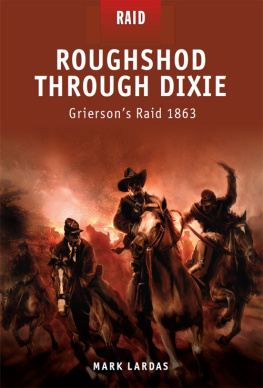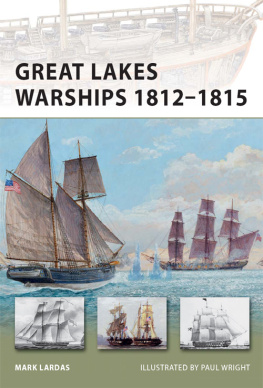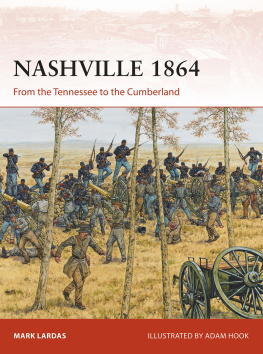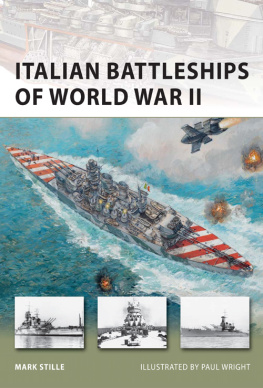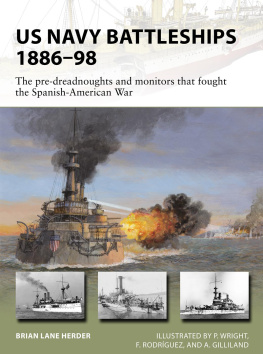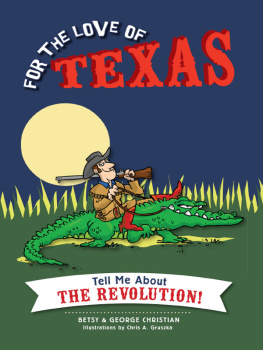
IMAGES
of America
THE BATTLESHIP TEXAS

The Battleship Texas has been in the care of the Texas Parks and Wildlife Department since 1983. Its dedicated staff of professionals brought the ship back from the brink of disintegration and led her maintenance and restoration for over 30 years, a charge they tend with pride. (TPWD.)
ON THE COVER: The crew of Texas occupies every inch of horizontal surface on the front of the battleship to watch a USO show aboard ship during World War II. Here, a sailor from the crew is made part of the show. (NARA.)
IMAGES
of America
THE BATTLESHIP TEXAS
Mark Lardas

Copyright 2016 by Mark Lardas
ISBN 978-1-4671-2393-8
Ebook ISBN 9781439657485
Published by Arcadia Publishing
Charleston, South Carolina
Library of Congress Control Number: 2016935276
For all general information, please contact Arcadia Publishing:
Telephone 843-853-2070
Fax 843-853-0044
E-mail
For customer service and orders:
Toll-Free 1-888-313-2665
Visit us on the Internet at www.arcadiapublishing.com
To my three sons, Nicholas, William, and Benjamin, all of whom have spent time with me aboard Texas.
CONTENTS
ACKNOWLEDGMENTS
No book is the product of a single author. Many folks helped me as I wrote and assembled this book. Those I especially would like to note include my son William Lardas for accompanying me on many of my trips and doing the photography; Andy Smith, superintendent, and Stephanie Croatt, curator of the Battleship Texas State Park, for providing access to Texas and its archives most battleship fans can only dream about; Philip Chumlea, a model-making friend who provided many of the pictures of the refit; and Gerald Miller for use of his centennial photographs.
I would also like to thank Mike Kinsella and Matt Todd, my editors at Arcadia Publishing, for their assistance.
As well, I thank my wife, Janet, for her support during this project.
The following abbreviations indicate the sources of the illustrations used in this volume:
| AC | Authors collection of images |
| GM | Photograph by Gerald Miller |
| LOC | Library of Congress |
| NARA | National Archives |
| TPWD | Texas Parks and Wildlife Department |
| UHDL | University of Houston Digital Archive Library |
| USNHHC | US Navy Naval Heritage and History Command |
| WL | Photograph by William Lardas |
INTRODUCTION
Our story starts on April 17, 1911, when workers at Newport News Shipbuilding and Dry Dock Company laid down steel plates to form the keel of Hull No. 147. The ship was christened Texas at launch on May 18, 1912. When construction finished in November 1913, Texas was the most powerful warship in the US Navy. At 573 feet long, 95 feet, 3 inches wide, and drawing 29 feet, 7 inches when fully loaded, Texas displaced 27,000 tons. On builders trials, she reached 21.79 knots.
Texas was not just a battleship. Texas was a dreadnought battleship. Dreadnoughts replaced the intermediate secondary battery of old-style battleships with additional main guns. Dreadnoughts had over twice the broadside of pre-dreadnought battleships.
Texas was a ship of firsts and lasts. The ninth dreadnought entering service in the US Navy when commissioned on April 12, 1914, she was the first with a main battery of 14-inch guns. Texas mounted 10 in five two-gun turrets, along with 21 five-inch guns and four 21-inch torpedo tubes. She was the first second-generation dreadnought (or super-dreadnought) built for the US Navy.
Texas was the last US dreadnought design built with armor of varying thickness, and the last design with reciprocating steam engines, direct drive between the engine and propellers, and coal-fired boilers. Subsequent US battleships used oil-fired boilers, which fed geared steam turbines and all-or-nothing armor.
After commissioning, Texas skipped the traditional shakedown cruise in response to the Tampico Incident. What started as a minor diplomatic imbroglio was enlarged by Pres. Woodrow Wilson into an American occupation of the Mexican port of Veracruz. Texas reinforced the US Navy fleet off Veracruz, spending an extended spring break off Mexico, remaining from May 26 through December 20, 1914.
Meanwhile, a war in Europe grew into the First World War. The United States remained neutral until April 1916, a period that Texas spent in routine fleet operations, training, and maintenance. Almost routine. On a foggy May 27, 1915, the Holland-American liner Ryndam was rammed by the fruit steamship Joseph J. Cuneo off the Nantucket lightship. Texas, with other US battleships, aided the stricken ship.
After the United States entered World War I, Texas was one of six US battleships sent to Europe. Texas joined the Royal Navys Grand Fleet in Scotland because she burned coal. Later US battleships burned oil. Britain was short of fuel oil but had plenty of coal. Texas joined the war effort late; she ran aground leaving America, requiring repair. She finally arrived on February 11, 1918.
Texas saw action, but not combat. She escorted convoys across the North Sea from Britain to Norway. Texas only got one crack at the German High Seas Fleet, on April 25, 1918. When the High Seas Fleet steamed into the Grand Fleet, Texas was part of the leading battleship division. The outnumbered Germans turned and scampered back to port before anyone got in range. Texas next sighted the High Seas Fleet in November 1918, when the Germans sailed into Scapa Flow to surrender.
Texas returned to the United States, arriving Christmas Day 1918, and went back to peacetime service. On March 9, 1919, a Sopwith Camel took off from a platform atop Texass No. 2 turret, making Texas the first US battleship to launch an aircraft. Starting in 1920, Texas served with the Pacific Fleet, returning to the Atlantic in 1924.
Had things gone as the Navy planned, Texas would have been replaced by the new Washington-class battleship then under construction. Instead, new construction was halted due to the 1922 Naval Limitations Treaty, and Texas was retained and modernized.
Texas emerged from modernization in 1926 dramatically different. Gone were her distinctive cage masts, replaced by new tripod masts. Her torpedo tubes were removed. Coal-fired boilers and coal bunkers departed, replaced by more efficient oil-fired boilers and fuel-oil tanks. Six oil-fired boilers did the work of 14 coal-burning boilers. Oil fuel reduced fuel storage space. Unneeded space previously used for coal bunkers was converted to crew quarters. Texas gained an updated fire control system, a suite of three-inch antiaircraft guns, and an aircraft catapult.
Now the most modern battleship in the US Navy, Texas spent 1928 as the flagship of the United States Fleet, a role it reprised several times over the next decade. It was a decade Texas spent seeing duty in both the Atlantic and Pacific, transporting VIPs and showing the flag.
In 1939, World War II started.
Next page

